Drying is a critical step in the preservation and processing of agricultural products, especially those intended for export. With advancements in technology, various drying methods have emerged, each with its own advantages and limitations. Choosing the right drying technique not only impacts the quality of the product but also plays a key role in overall economic efficiency. In this article, Viot Minh Trang Compare drying methods to help businesses determine the optimal solution for their needs.
Overview of Common Agricultural Drying Methods
Before diving into a detailed comparison, let’s take a look at the widely used agricultural drying methods currently in practice:
Sun Drying (Natural Drying)
- Characteristics: Utilizes direct solar energy. It is the most traditional and simplest method.
- Advantages: Almost zero investment cost and no electricity consumption during operation.
- Disadvantages: Highly weather-dependent, difficult to control temperature, susceptible to contamination from dust, insects, and mold. Product quality is often inconsistent and usually fails to meet export standards.
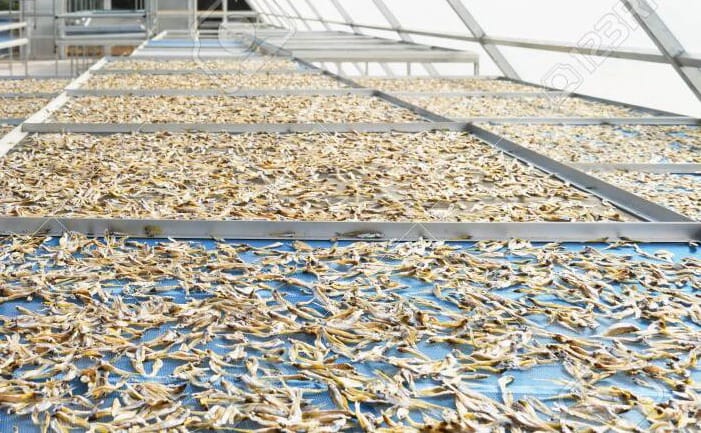
Sun Drying
Hot Air Drying (Convection Drying)
- Characteristics: Uses heated air (by electricity, coal, gas, or biomass) that is blown over the agricultural products.
- Advantages: Fast drying time, high capacity, easy temperature control, and suitable for a wide range of agricultural products.
- Disadvantages: High temperatures can alter color, flavor, and heat-sensitive nutrients.
Cold Drying (Heat Pump Drying)
- Characteristics: Operates based on the heat pump principle to remove moisture. Air is first cooled to condense moisture, then slightly heated and circulated into the drying chamber at a low temperature (20–50°C).
- Advantages: Low drying temperature helps preserve color, flavor, nutrients, and the product’s structure. Produces high-quality results, ideal for soft drying with good color retention.
- Disadvantages: High initial investment cost; drying time may be longer than hot air drying.
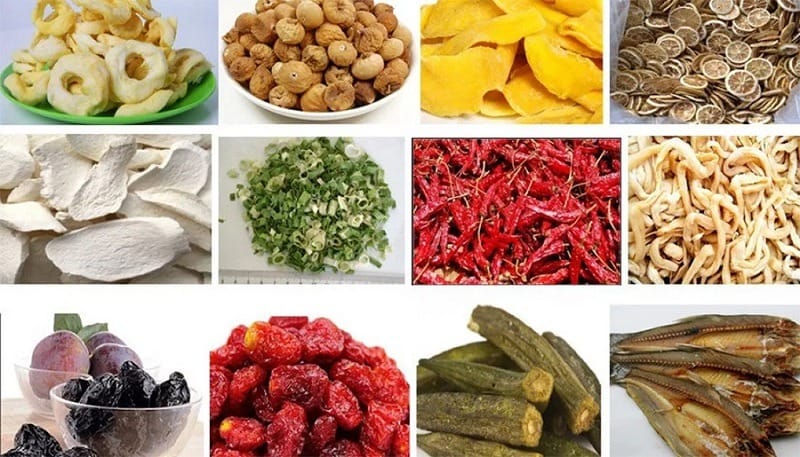
Cold Drying
Freeze Drying (Lyophilization)
- Characteristics: Agricultural products are deeply frozen, and the ice is then sublimated directly into vapor under a vacuum environment.
- Advantages: Preserves nearly 100% of the product’s color, flavor, structure, and nutrients. The final product is lightweight, crisp, and easy to rehydrate.
- Disadvantages: Extremely high investment and operational costs, very long drying time, and only suitable for very high-value products.
Microwave Drying & Infrared Drying
- Characteristics: Use electromagnetic energy to heat and remove moisture from within the product.
- Advantages: Extremely fast drying time and energy-saving for specific applications.
- Disadvantages: High initial investment, challenging to maintain uniform temperature, and may cause the product to become overly dry or hard if not properly controlled.
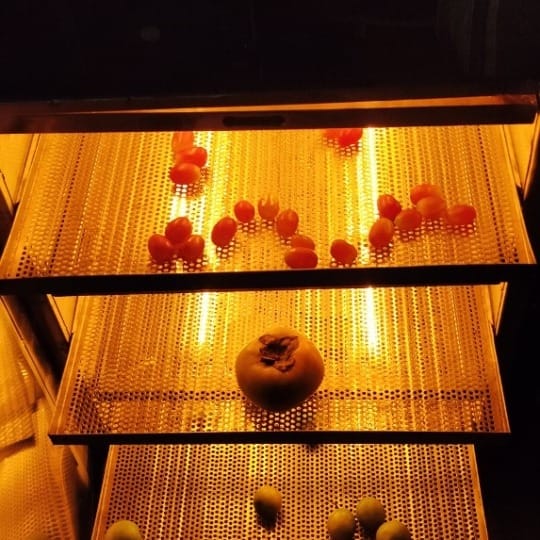
Microwave Drying & Infrared Drying
See now:
Agricultural Export Opportunities – A Growth Engine for Vietnam’s Agriculture
Detailed Comparison of Agricultural Drying Methods by Key Criteria
To help you make an informed decision, the comparison table below analyzes the advantages and disadvantages of each drying method based on important criteria:
| Criteria | Sun Drying | Hot Dry (Convection) | Refrigeration Drying (Heat Pump) | Freeze Drying | Microwave/Infrared Drying |
| Investment costs | Very low | Low – Medium | High | Very high | High |
| Operating costs | Very low | Medium – High | Medium | Very high | Medium – High |
| Drying time | very long | Fast | Medium – Long | very long | Very fast |
| Color preservation | Least | Medium (easy to darken) | Good | Very good | Rather |
| Preserve flavor | Least | Medium | Good | Very good | Rather |
| Nutritional preservation | Least | Medium | Good | Very good | Good |
| Product uniformity | Least | Medium | Good | Very good | Medium |
| Controllability | Very difficult | Good | Good | Very good | Rather |
| Safe cleaning | Poor (easily contaminated) | Good | Good | Very good | Good |
| Suitable agricultural products | Low requirements, small volume | Variety, large volume | Sensitive fruits, herbs, vegetables | High value products, need absolute protection | Some nuts, instant foods |
| Export application | Limit | Popular | High-class | Very high class | Limit |
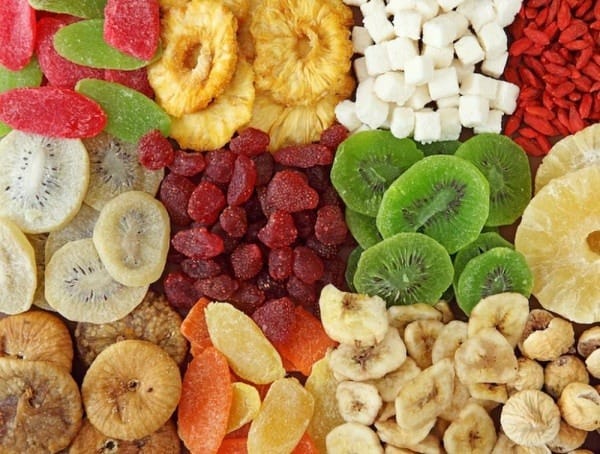
Agricultural drying methods
See now:
Top 5 main agricultural export products bringing USD rate to Vietnam
Which Drying Method Is the Most Optimal?
There is no single drying method that is universally optimal for all types of agricultural products and purposes. The “best” choice depends on specific factors related to the business and target market:
Depends on the Type and Characteristics of the Product
For fresh fruits, vegetables sensitive to high temperatures, or medicinal herbs that require preservation of color, flavor, and active compounds, cold drying (heat pump) or freeze drying (lyophilization) are the most suitable options.
For grains, cereals, coffee, or products that are less heat-sensitive and require large-scale drying, hot air drying (convection drying) remains an effective and economical method.
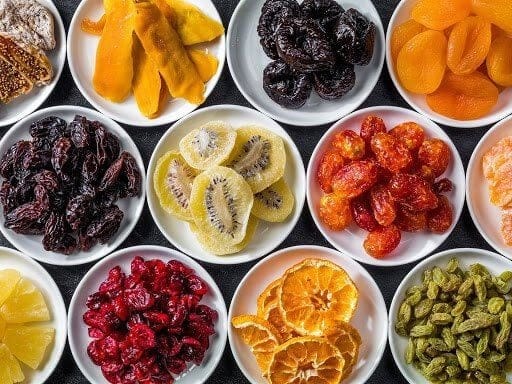
Depending on the Type and Characteristics of the Agricultural Product
Depending on Target Market Requirements and Quality Standards
Demanding markets such as the EU, Japan, and the United States often require high-quality products in terms of appearance, nutrition, and food safety. Therefore, investing in advanced drying methods like cold drying or freeze drying is essential to meet export standards.
Less strict markets may accept hot air-dried products, allowing businesses to optimize costs more effectively.
Consider Investment Budget and Economic Efficiency
Businesses should carefully assess initial investment costs, operational expenses, and the profit potential of dried products. While high-tech drying methods may involve greater upfront costs, they can offer higher added value and stronger competitiveness in the long term.

Consider Investment Budget and Economic Efficiency
The Importance of Research and Testing
Before making a large investment, businesses should conduct research and test various drying methods on their own agricultural products to identify the most optimal process in terms of both quality and economic efficiency.
See now:
Summary of 5 popular agricultural drying methods today
Application of Drying Technology in Export Agricultural Processing at VIOT Vietnam
At VIOT Minh Trang, we understand the vital role that modern drying technologies play in enhancing product value and meeting export standards. We are committed to delivering the highest quality processed agricultural products through the use of advanced drying methods.
At Viot Minh Trang, we invest in modern drying systems, particularly cold drying and closed-loop hot air drying, optimized for each type of Vietnamese agricultural product. For example, soft-dried fruits like mango, jackfruit, and dragon fruit are processed using cold drying technology to preserve their natural color, flavor, and nutrients. For vegetables and grains, we apply convection drying with a strictly controlled temperature process.
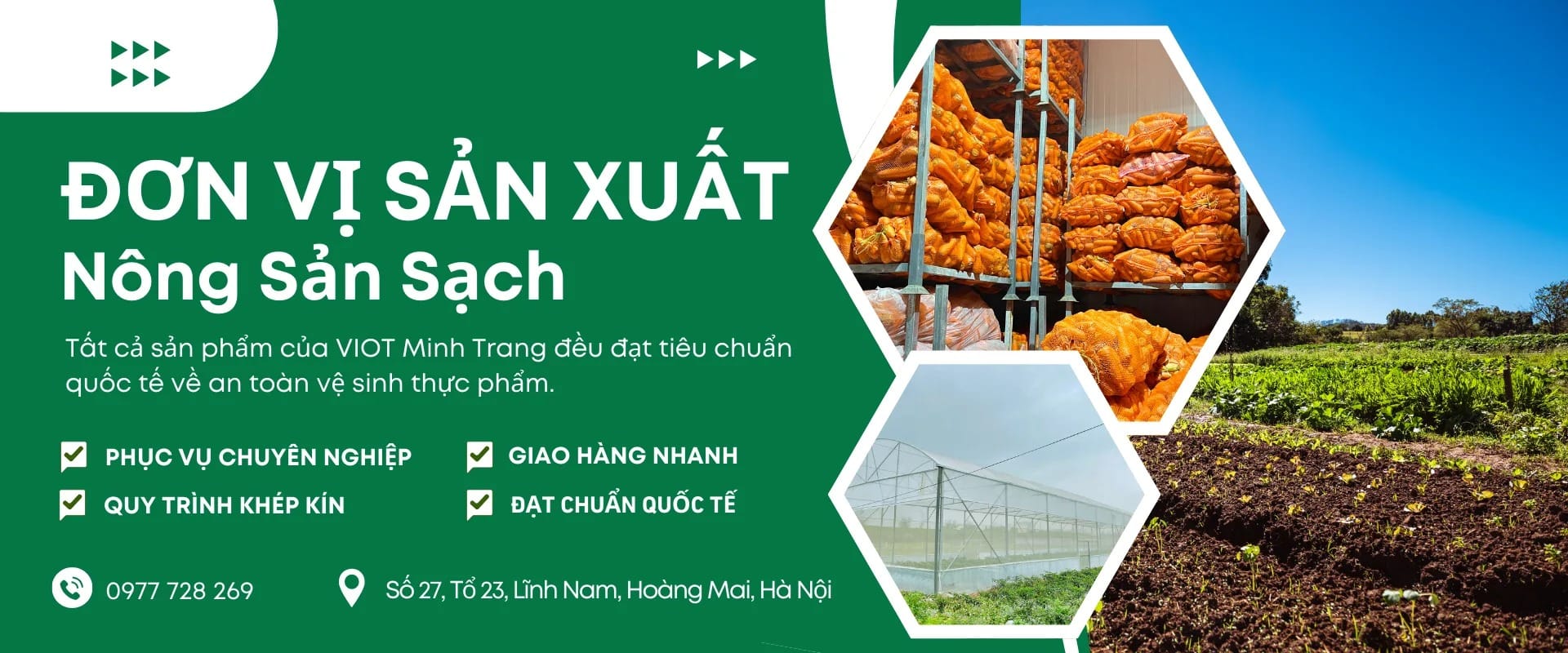
Viot Minh Trang – Applying Drying Technology in Export Agricultural Processing
Viot Minh Trang’s products, processed using advanced agricultural drying methods, are certified by international standards such as ISO 22000, HACCP, GMP, and FDA. These certifications not only affirm product quality but also ensure compliance with the most stringent export procedures, making our products ready to conquer demanding markets with large volumes and consistent quality.
Drying methods play a crucial role in the modern agricultural value chain, especially in the context of export. Each drying technique comes with its own advantages and limitations—there is no single “best” method for every product. Choosing the optimal method requires careful consideration of the product’s characteristics, market requirements, and economic efficiency.
Through investment in modern drying technologies and strict adherence to international quality standards, companies like Viot Minh Trang are enhancing the value of Vietnamese agricultural products and reinforcing their position and quality on the global agricultural map.





Tác giả Tưởng Mạnh Biên
Là chuyên gia giàu kinh nghiệm trong lĩnh vực xuất khẩu nông sản. Với nhiều năm làm việc, nghiên cứu và trực tiếp tham gia vào các hoạt động sản xuất, kinh doanh và xuất khẩu nông sản, tác giả chia sẻ những kiến thức chuyên môn sâu sắc cùng các bài học thực tiễn giá trị nhằm hỗ trợ doanh nghiệp.
- Địa chỉ: Số 27, Tổ 23, Lĩnh Nam, Hoàng Mai, Hà Nội
- Email: viotvietnam.vn@gmail.com
- SĐT: 0977 728 269